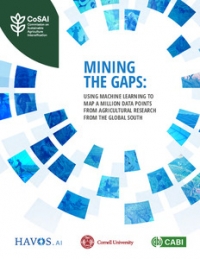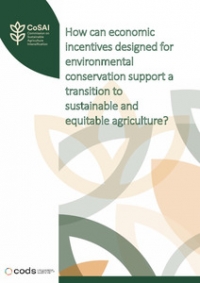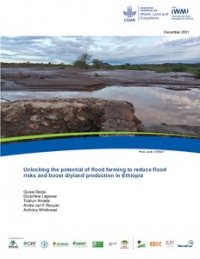Exchanging data across borders in transboundary basins is key to averting disasters, managing risks, avoiding conflict and enabling effective water management. Examples abound of both the benefits of data sharing and the adverse impacts of failing to exchange data. Data exchange between Mozambique and Zimbabwe, for example, has improved flood forecasting in the Pungwe basin of Southern Africa, and in the Mekong Basin efforts to strengthen data exchange continue to improve basin monitoring and flood forecasting.
The importance of effective data sharing receives broad support. A report by the World Meteorological Organization on tropical cyclone Idai's impact across parts of Mozambique and Zimbabwe in 2019, for instance, recommends timely data and information exchange to avert destruction of the magnitude experienced in both countries.
Data exchange is also mandated in global treaties such as the 1997 UN Watercourses Convention and the 1992 Water Convention, as well as basin level transboundary treaties. Furthermore, Sustainable Development Goal (SDG) global indicator 6.5.2 measures transboundary water cooperation through four indicators, one of which is regular data exchange, and the Global Acceleration Framework for SDG 6 shows that data and information exchange is an important accelerator towards attaining the goal. By unlocking bottlenecks in data generation and exchange, greater progress in achieving developmental goals may be realized.
Assessing global practice
In a recent WLE study, a first attempt to assess the global practice of data exchange was undertaken by applying a data exchange assessment framework across 25 global transboundary river basins. This assessment aimed to understand what water data are exchanged, and with what frequency. With one exception, results revealed that the data exchange falls far short of best practice. River flow data were widely shared (in just over 75% of the basins). However, groundwater level and water quality data were shared in less than half of the basins, and not all exchanges were regular or frequent. Other parameters, such as surface water abstraction, were shared in just over one quarter of basins. Even allowing for differences in context and priorities in each basin, this limited scope of data exchange underlines a disappointing gap between global-and basin-level principles on the one hand, and practice on the other.
Improving data exchange
Two potential mechanisms to promote cross-country data exchange showed mixed results. First, the premise that formulation of a data exchange protocol would support more robust data exchange was, unfortunately, not supported by evidence. While protocols provide more targeted guidance for exchanging data, their effectiveness in facilitating exchange was not clearly evidenced: basins with protocols exchange roughly the same breadth and depth of data as those without.
On the other hand, basins that make use of data-sharing platforms were found to exchange data in greater frequency for some types of data. For example, in the Niger Basin, online sharing of river flow data occurs at least daily. Nonetheless, examples of online data-sharing platforms that lose momentum after project implementation, reinforces the importance of ensuring basin-level capacity and financial sustainability.
Other compelling options to satisfy data requirements of transboundary basins merit consideration. Joint monitoring, for instance, may support data generation and exchange, strengthening cooperative relations and decision making. This may alleviate in-country data generation challenges and promote joint efforts in developing monitoring systems. And while attractive new options are emerging, including technological advancements in data generation such as the application of big data and remote sensing, meaningful operationalization of these tools may still be some way off, particularly in resource-constrained contexts. Furthermore, such advancements, however positive, may not necessarily foster the same level of trust and cooperation as data exchange.
Time to mainstream data exchange?
Heightened uncertainty due to climatic variations and the more recent global pandemic has highlighted inadequacies in water infrastructure, particularly related to water supply, sanitation and access to drinking water in Africa. Realization of these limitations has spurred urgent interest in programs such as Programme for Infrastructure Development in Africa in transboundary basins. Although data and its exchange in a transboundary context is essential for the evidence-based strategic planning within which these much-needed investments will be pursued, required data are often scarce and as shown from the results of this study, exchanged at low levels and with a narrow scope. There is therefore a need to place data collection and exchange at the centre of transparent water cooperation across countries, which in turn should form the foundation for regional integration and sustainable infrastructure development.
---
Thrive blog is a space for independent thought and aims to stimulate discussion among sustainable agriculture researchers and the public. Blogs are facilitated by the CGIAR Research Program on Water, Land and Ecosystems (WLE) but reflect the opinions and information of the authors only and not necessarily those of WLE and its donors or partners.
WLE and partners are supported by CGIAR Trust Fund Contributors, including: ACIAR, DGIS, FCDO, SDC, Sida and others.























